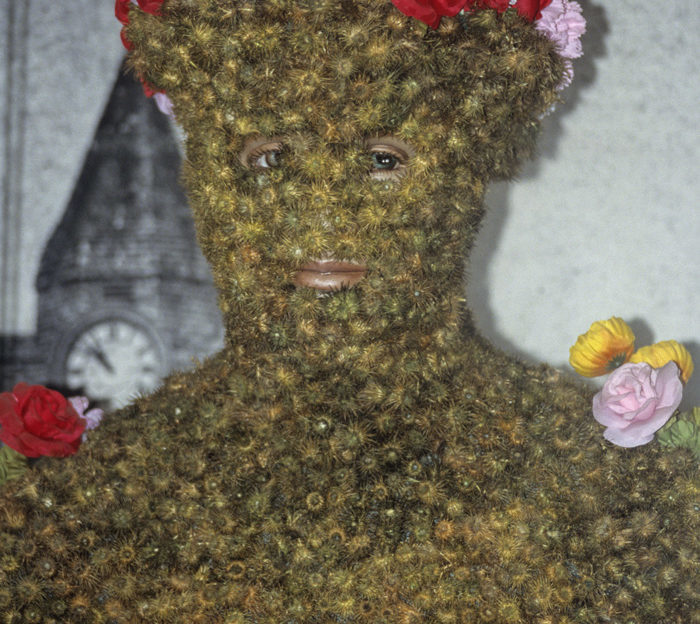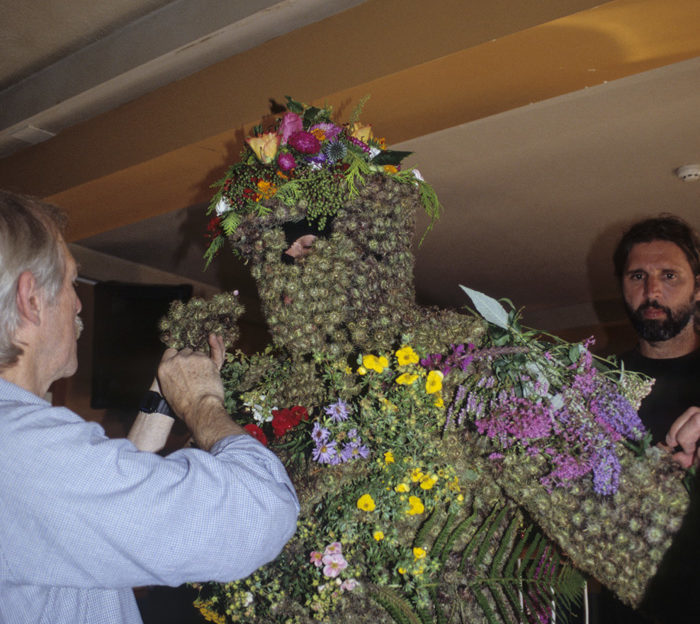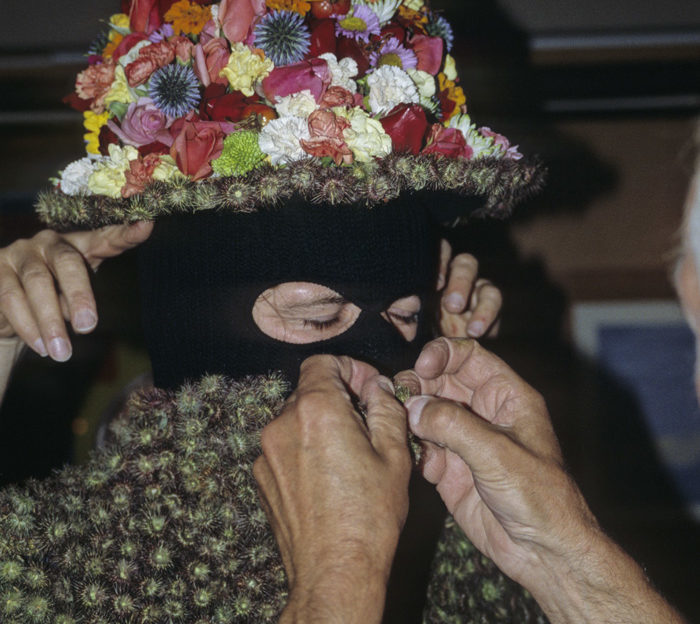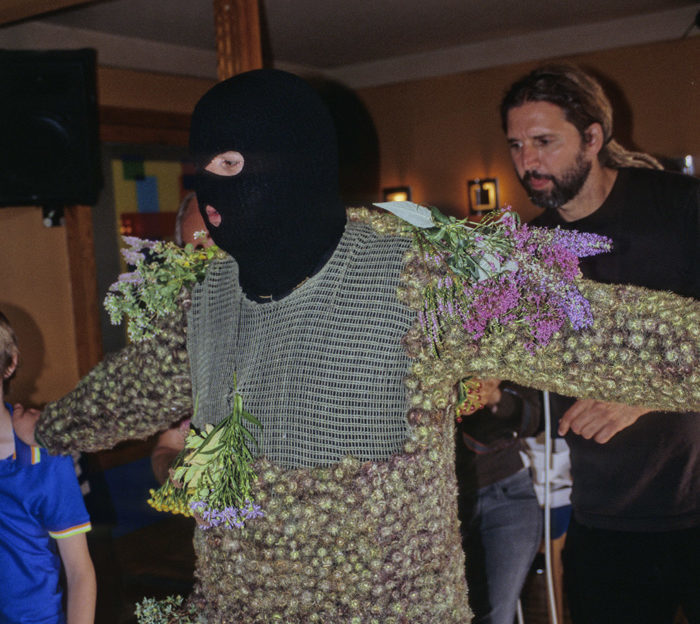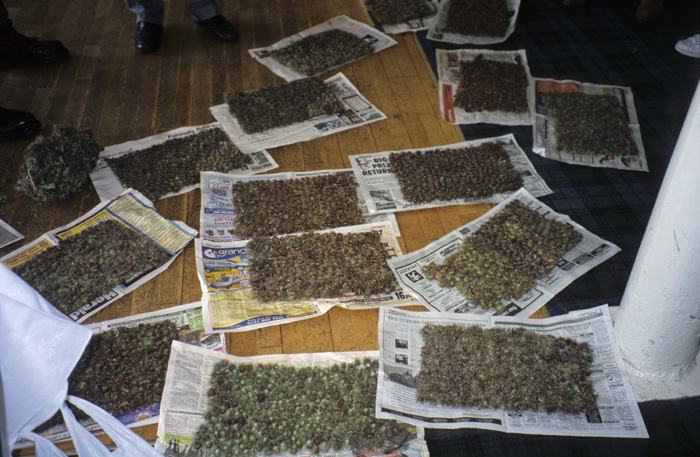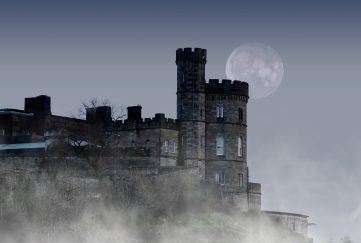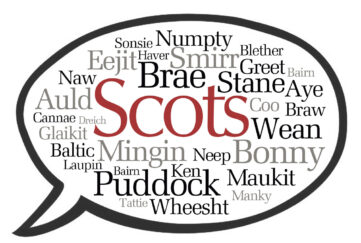The Burry Man
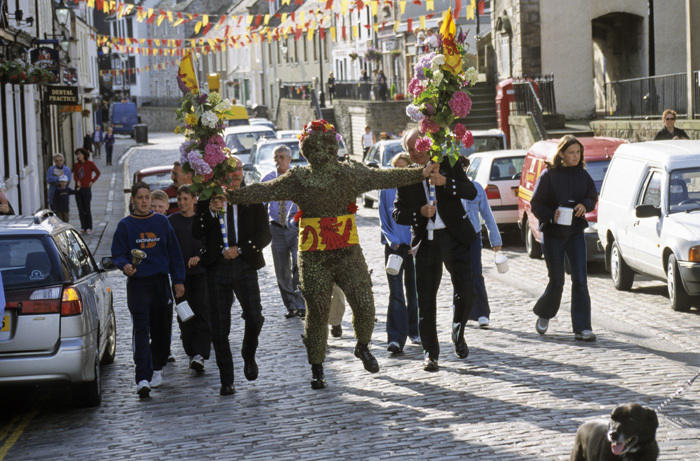
The Staghead Hotel, Queensferry, near Edinburgh, 7am.
Newspapers are spread over tables and floor and on these rest greeny-brown squares, each the size of a face flannel, made up of clinging rows of burrs, those pestilential sticky seedheads which cling so annoyingly to clothes.
Just how effectively they cling, these patches indicate. There must be hundreds in each and they can be lifted without disintegrating. Nature’s Velcro. They are being lifted and slapped onto a young man who stands patiently and uncomplaining. What on earth is going on?
They are in fact dressing up “the Burry Man” as part of Queensferry’s annual summer festival, an event which goes far back in time.
Alan Reid, who was the previous Burry Man for 26 years, explained that it was a more widespread ceremony centuries ago but, like so much of rural tradition, it has largely died out. “But we are determined Queensferry will keep the colourful tradition going.” Last year’s incumbent was John Nicol, a 36 year old graphic designer.
The Ferry Fair was given its charter by Charles II in 1687 but today is simply a gala day with the crowning of a Ferry Queen, a burgh race (the prize a symbolic pair of boots, carried aloft on a halberd), the shows (fun fair) and other social jollity. The Burry Man walkabout takes place on the eve of the Fair, and the charter date of July 25 may have been changed to the second weekend in August to ensure there was time for the burrs to be truly ripe and ready for collecting.
“Another suggestion is that the Burry Man is a scapegoat figure.”
The meaning of the ceremony has been lost but could have been to do with seeking good fortune for town or harvest. The harvest could have been from the sea, for Buckie and Fraserburgh once paraded similar good-luck figures. In Buckie when the fishing failed, a cooper was dressed in burrs and wheeled in a barrow through the town. In Fraserburgh the Burry Man mounted a horse to ride through the town in a crowd of the population, a piper leading. In 1864 the ritual seems to have ceased.
Another suggestion is that the Burry Man is a scapegoat figure, the burrs representing the guilt of the village being collected and driven out – though there is no record of such treatment, even in mime. Today’s Burry Man makes a welcoming, social round of the town and John is the first to admit that a certain euphoria remains long after the miles walked and the seventeen drams have been consumed.
John admitted that as soon as he starts being dressed he feels he is somehow set apart, facing a lonely, isolated time despite being the centre of attraction, tingling with almost a mystical element so outside rational thought, body and mind parted so he seems spectator as much as participant. Yet at the same time, the event is a physical challenge (and one with considerable discomfort), even to having vision framed “by the bush you are peering out from”.
“The last part of the day is the strangest,” he said. When the hood is ripped off it is “like being born, in an instant becoming John Nicol again as the Burry Man disintegrates and all the aches and pains take over.”
Fascinating Facts
- Burrs are the sticky seedheads of certain species of Burdock
- Ceremony first recorded 1687 – thought to be much older
- The Burry man is meant to collect all the burrs himself
- Some believe the tradition is thousands of years old and the original Burry man was a sacrificial victim


